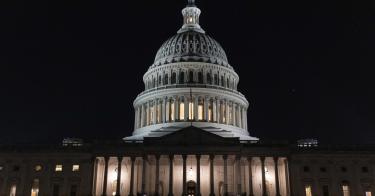House Speaker Kevin McCarthy’s and President Joe Biden’s debt ceiling deal is nothing for conservatives to write home about. The legislation is short on fiscal sanity and long on profligate government spending. Here are some of the highlights, but mostly lowlights, of what negotiators from both sides hammered out, and over which legislators are now fighting.
First, let’s dispense with the fallacious nomenclature. This bill does not meaningfully cut spending—it merely provides a slight reduction in outlays this year by $12 billion and claws back $28 billion in unspent COVID money. Saying this bill raises the debt ceiling is also a misnomer—it suspends the borrowing cap on the Treasury until after the 2024 election.
That purposely puts the nation’s financial future into the hands of a lame-duck Congress, and possibly a lame-duck White House, with no accountability to voters.
The deal also removed the REINS Act, which would’ve returned legislative authority to Congress by ensuring their approval for major regulations. Instead, the new bill has a massive loophole that allows the White House’s Office of Management and Budget to simply waive cost-saving requirements.
>>> Work Requirements in Welfare Programs Take a Hit in Debt Ceiling Deal
This workaround is a perfect example of a problem that occurs multiple times in this legislation: it gives big spenders in Washington—both Republicans and Democrats—ways to keep feeding at the taxpayer trough.
This deal also retains nearly all the $72 billion in funding for a new army of IRS agents, along with $1.2 trillion in subsidies for “green” energy boondoggles. It also retains Biden’s unprecedented, and likely unconstitutional, student loan bailout, estimated to cost anywhere from $500 billion to $1 trillion.
Conversely, the wins for conservatives in this bill are few and far between. Most of Limit, Save, Grow’s proposed strengthening of work requirements on welfare were removed. And only a slightly stricter work requirement on the Supplemental Nutrition Assistance Program remains: raising the work requirement age from 49 to 54 and slightly reducing how many people states can waive work requirements for.
Other wins are almost poison pills, like permitting reform. While the changes will make it easier to get a few coal, oil, or natural gas projects started, this will mostly be used to finance the climate-industrial complex by greenlighting solar and wind projects and electric grid changes to facilitate more electric vehicles—all left-wing priorities.
The Limit, Save, Grow Act that the House of Representatives passed earlier in the year was already a compromise from the start, not a conservative wishlist. For example, it still allowed discretionary spending to grow at 1 percent annually and didn’t even limit other spending categories at all.
Perhaps McCarthy should’ve taken a lesson from Trump’s Art of the Deal and started negotiations with a hardline position, not a compromise, since the White House successfully negotiated virtually everything it wanted, including a suspension of the debt ceiling until after the 2024 election.
>>> Debt Ceiling Deal Misses the Mark on Student Loan Debt
The bill is such a win for the far left that National Economic Council Deputy Director Bharat Ramamurti described it as cementing the administration’s “incredibly strong set of progressive accomplishments.”
It’s no wonder so many conservatives want McCarthy to go back to the negotiating table and hammer out a better deal. The current bill is a wolf in sheep’s clothing. It could actually lead to higher overall spending levels next year, while encouraging omnibus spending bills thereafter because of a minor penalty on continuing resolutions.
Conservatives have little to celebrate with this deal, and much about which to complain. In fact, there’s probably another four-letter word besides “deal” that better describes this left-wing legislation.
This piece originally appeared in the Daily Caller




